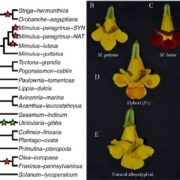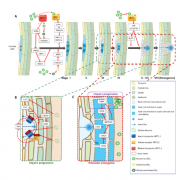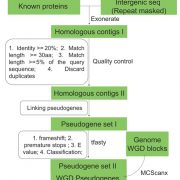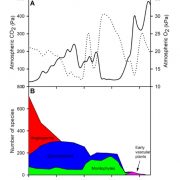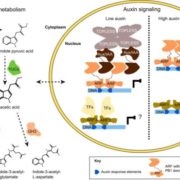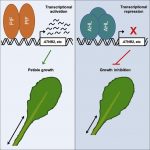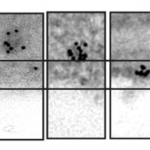miRNA-mediated lateral inhibition controls rhizoid cell patterning in Marchantia polymorpha (Curr. Biol.)
 In multicellular organisms, the patterning of different cell types in spatial arrays is regulated through several mechanisms, one of which is lateral inhibition, a process well characterized in metazoans. In this process, an individual cell transmits signals to neighboring cells to instruct a different cell fate to that of the instructing cell. In plants, lateral inhibition mechanisms described to-date (e.g., guard cell and trichome patterning) act mainly through mobile proteins. In a recent paper Thamm et al., describe an activator-repressor system that regulates rhizoid cell patterning through lateral inhibition in Marchantia polymorpha. The authors make use of simple cellular automata models and genetic data to describe a system where the FEW RHIZOIDS (MpFRH1) microRNA regulates cell fate in neighboring rhizoid cells through repression of the ROOT HAIR DEFECTIVE SIX-LIKE1 (MpRSL1) transcription factor, a positive regulator of MpFRH1 essential for rhizoid development. The authors demonstrate that, in contrast to wild-type plants where rhizoid cells form linear chain-like structures, Mpfrh1loss of function mutants develop two-dimensional clusters of rhizoid cells. The authors propose a model in which epidermal cells are inhibited from adopting the rhizoid cell fate only when these are adjacent to two rhizoid cells, and so exposed to more than a threshold level of MpFRH1 repressor. The authors observe that “the MpFRH1-lateral inhibition mechanism is restricted to the liverworts, suggesting that different lateral inhibition mechanisms control the patterning of rhizoids in liverworts, and root hairs in angiosperms.” (Summary by Jesus Leon) Curr. Biol. 10.1016/j.cub.2020.03.032
In multicellular organisms, the patterning of different cell types in spatial arrays is regulated through several mechanisms, one of which is lateral inhibition, a process well characterized in metazoans. In this process, an individual cell transmits signals to neighboring cells to instruct a different cell fate to that of the instructing cell. In plants, lateral inhibition mechanisms described to-date (e.g., guard cell and trichome patterning) act mainly through mobile proteins. In a recent paper Thamm et al., describe an activator-repressor system that regulates rhizoid cell patterning through lateral inhibition in Marchantia polymorpha. The authors make use of simple cellular automata models and genetic data to describe a system where the FEW RHIZOIDS (MpFRH1) microRNA regulates cell fate in neighboring rhizoid cells through repression of the ROOT HAIR DEFECTIVE SIX-LIKE1 (MpRSL1) transcription factor, a positive regulator of MpFRH1 essential for rhizoid development. The authors demonstrate that, in contrast to wild-type plants where rhizoid cells form linear chain-like structures, Mpfrh1loss of function mutants develop two-dimensional clusters of rhizoid cells. The authors propose a model in which epidermal cells are inhibited from adopting the rhizoid cell fate only when these are adjacent to two rhizoid cells, and so exposed to more than a threshold level of MpFRH1 repressor. The authors observe that “the MpFRH1-lateral inhibition mechanism is restricted to the liverworts, suggesting that different lateral inhibition mechanisms control the patterning of rhizoids in liverworts, and root hairs in angiosperms.” (Summary by Jesus Leon) Curr. Biol. 10.1016/j.cub.2020.03.032



